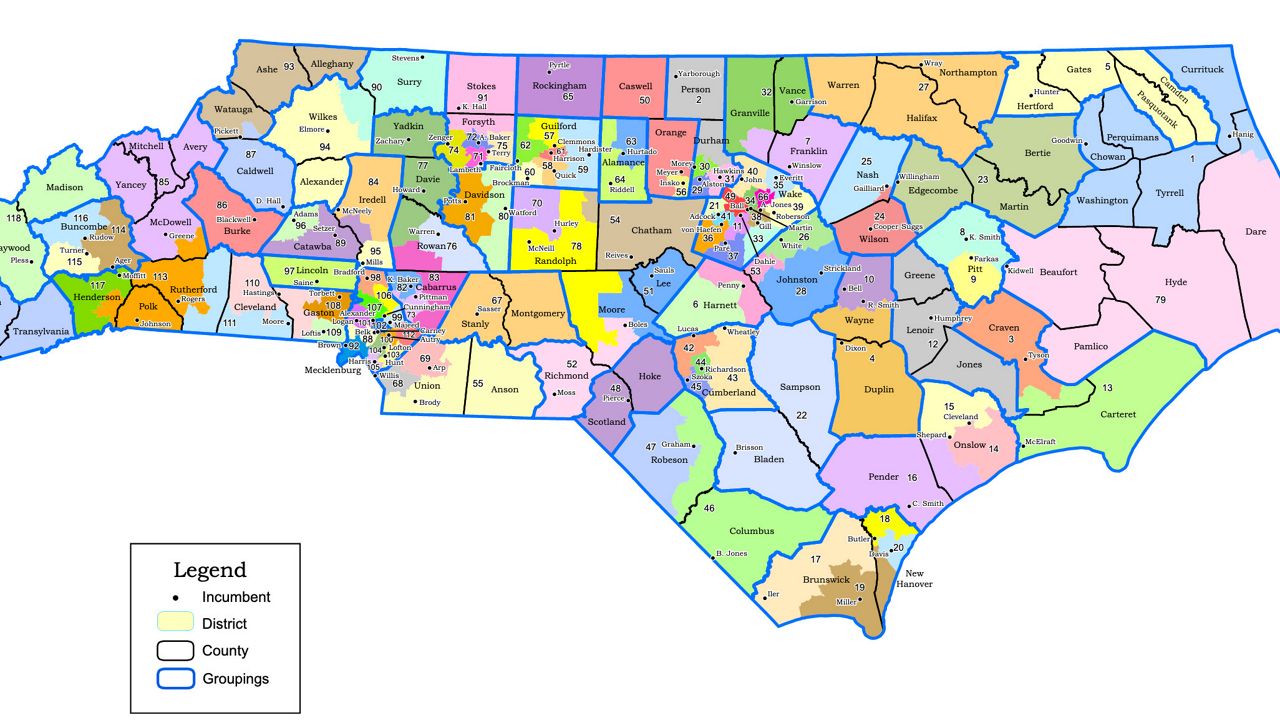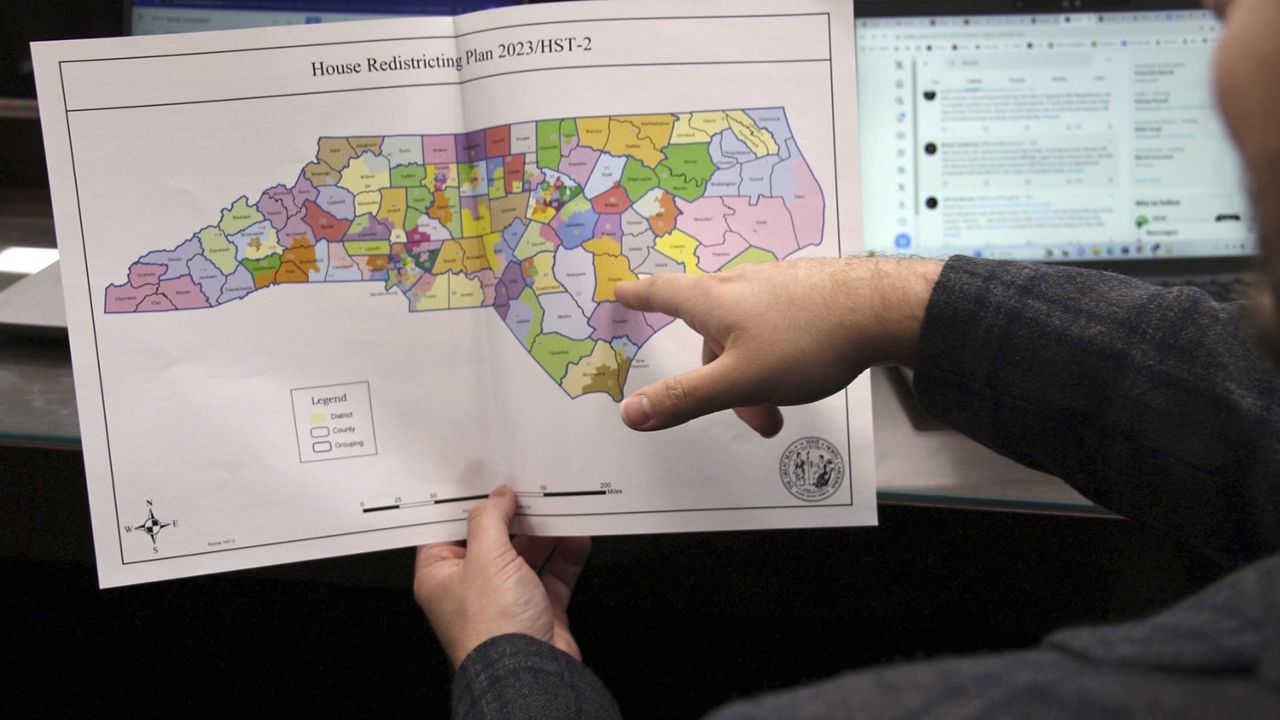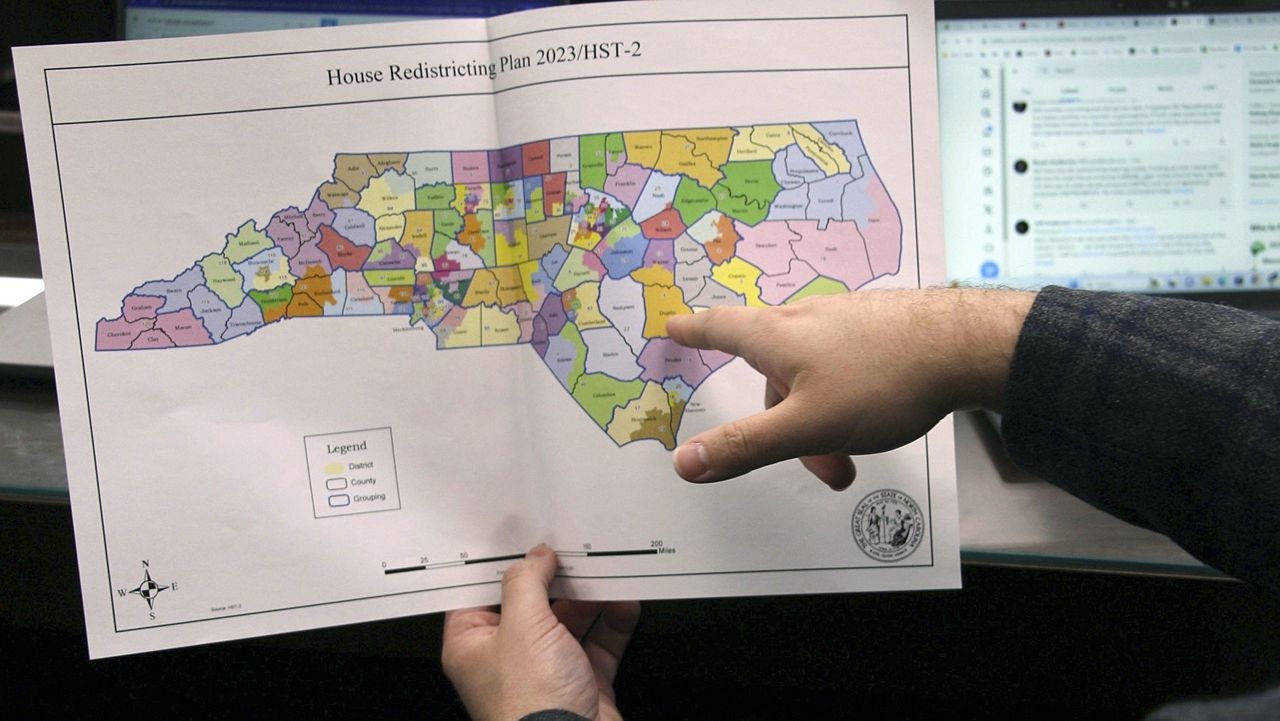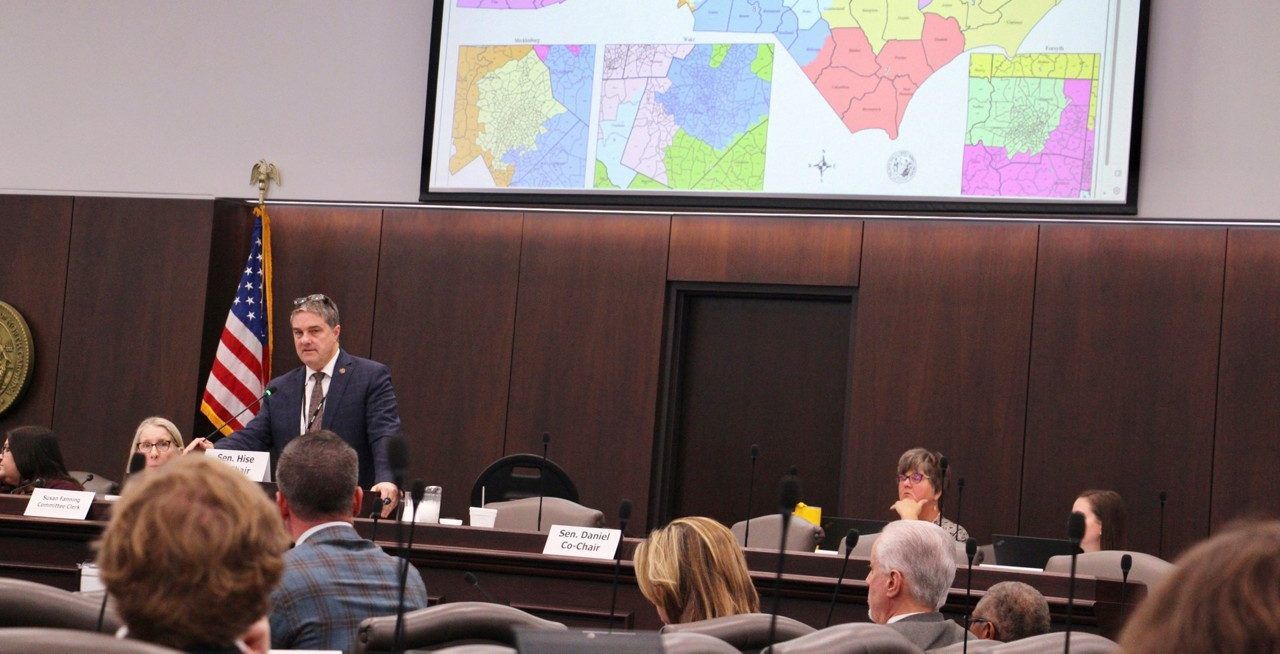The deadline is fast approaching for a Wake County court to pick new redistricting maps for the 2022 elections. The North Carolina Supreme Court gave the three-judge panel in Raleigh until noon on Wednesday to set new maps for this year’s elections for Congress and the state General Assembly.
The state Supreme Court halted candidate filing in December to hear two lawsuits accusing the GOP-led General Assembly of illegal gerrymandering. The lawsuits said the new political maps gave Republicans an unfair advantage in elections and took power away from Black voters.
In a state evenly divided between Republicans and Democrats, the original maps would have allowed the GOP to keep its majority in the state House and Senate. The maps had the potential to give Republicans a supermajority that could overturn the governor’s veto. The congressional districts were drawn in a way to give Republicans at least 10 of North Carolina’s 14 seats in the U.S. House.
The Supreme Court’s Democratic majority decided the maps were unconstitutional and sent the legislature back to the drawing board to make new maps.
North Carolina’s political maps could have national impact as the parties fight for control of Congress in the 2022 elections.
The General Assembly voted to approve a new set of maps for Congress and the North Carolina House and Senate last week. Republicans leading the legislature’s redistricting committees drew the new maps behind closed doors.
Political experts say the legislature’s new maps give Democrats at least four safe congressional seats and Republicans six. That leaves four districts about evenly split between the parties, according to Catawba College political scientist Michael Bitzer, who compared the new districts to 2020 election data.
The plaintiffs in the two lawsuits also submitted their own maps. The North Carolina League of Conservation Voters submitted the same congressional and North Carolina Senate maps it used during the trial.
The organization said the maps would give Democrats just under half the seats in the North Carolina Senate, and half the state’s congressional seats.
“The NCLCV Maps were designed — harnessing the power of computational redistricting — to have exactly the features the North Carolina Supreme Court has identified as defining lawful maps,” the league said in a court filing last week.
“They allow the majority to rule and treat both major political parties and all racial groups fairly — all while excelling on traditional neutral districting principles,” the League said.
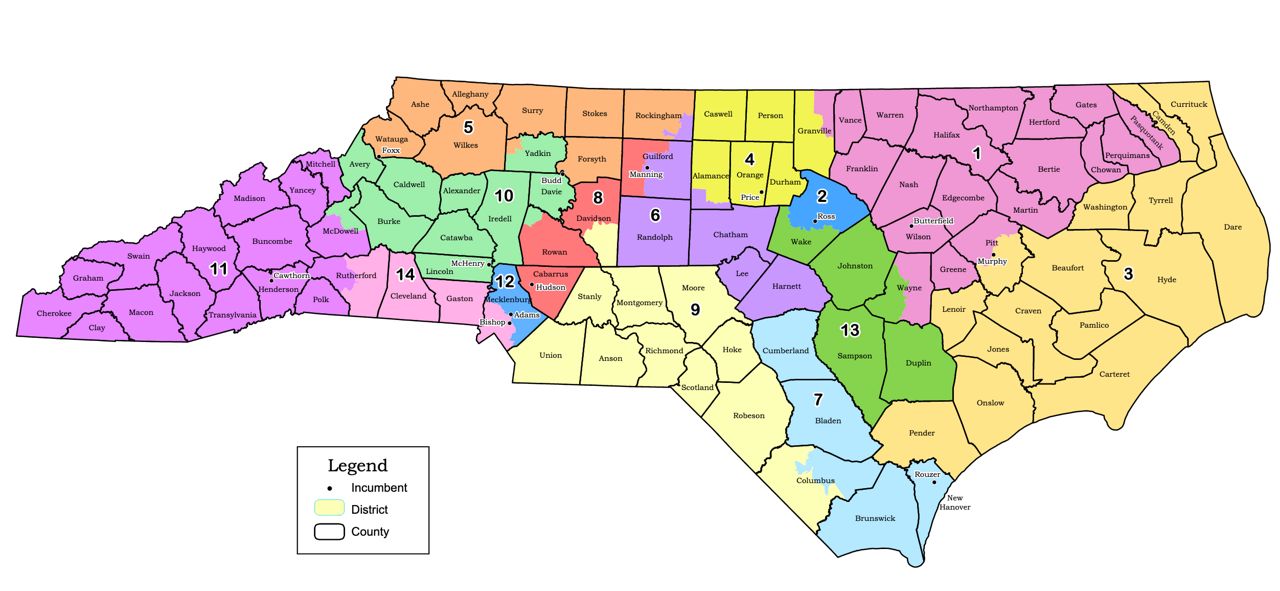
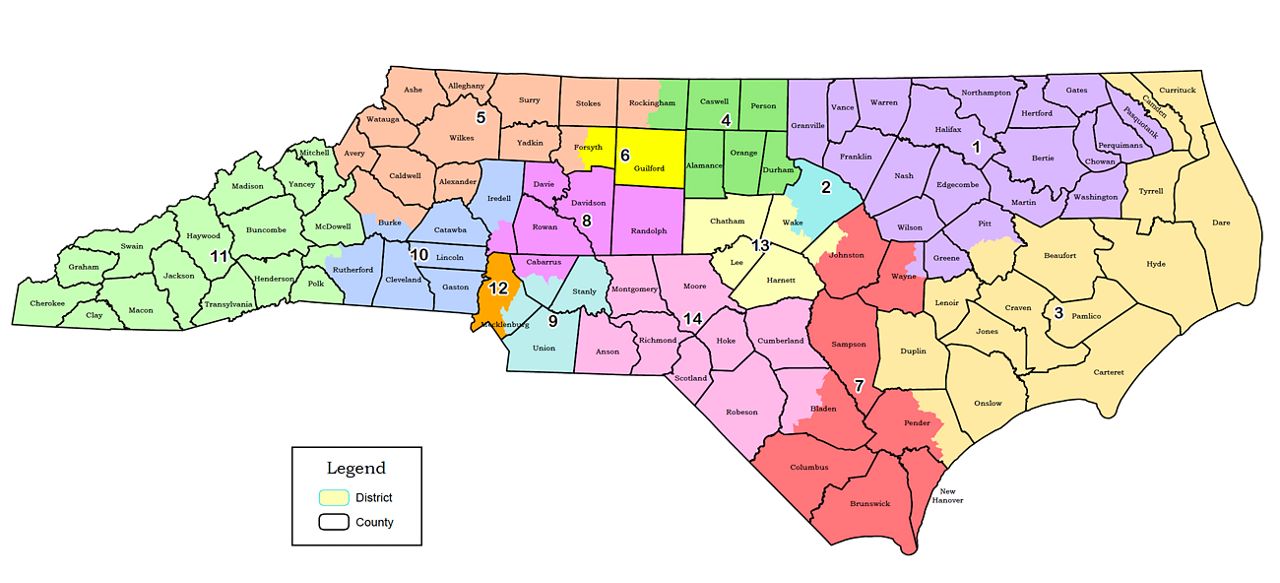
Common Cause, another nonprofit that sued over the maps, did not submit its own maps. In a court filing, Common Cause asked for changes to one House and one Senate district in the maps approved last week by the General Assembly.
“The two districts proposed by Common Cause are necessary to ensure compliance with state Constitutional law by drawing districts required by the Voting Rights Act (VRA) prior to all others,” Common Cause said in the filing.
“There is racially polarized voting in this area, such that the white majority vote sufficiently as a bloc to enable it to usually defeat the minority’s preferred candidate,” the organization said.
The Supreme Court order said the Wake County judges could also create their own maps if they are not satisfied with the maps submitted by the General Assembly or the two organizations that sued.
It is ultimately up to a three-judge panel in Wake County to decide the maps for the 2022 elections.
The judges appointed two Special Masters to help with the work of selecting the best maps: Bob Orr and Robert Edmunds, both former justices of the North Carolina Supreme Court, and Thomas Ross, who served as a judge and is the former president of the University of North Carolina System.
The court tasked the three Special Masters with analyzing the maps and preparing a report so the judges can make the final decision on which maps to use.
The three-judge panel has until noon Wednesday to rule on which maps will be used for congressional and legislative elections this year.
If Republican leaders want to appeal the maps approved by the Wake County, they have until 5 p.m. Wednesday to apply for an emergency stay. That could potentially delay the election further.
These lawsuits and court rulings turned into high drama in December. Candidate filing opened, then shut down, then began again and was finally ended by an order from the North Carolina Supreme Court, all in a matter of days.
Candidate filing for the 2022 primaries will reopen at 8 a.m. Thursday. That is less than 24 hours after the court is set to approve the new maps.
Political parties and would-be candidates will be pouring over those maps as soon as they’re approved. Congressional candidates do not have to actually live in the districts they represent, but people running for seats in the North Carolina House and Senate do have to live in their districts.
If the election schedule holds through the latest round of court filings and rulings, candidate filing will be back open Thursday with new maps. The filing period runs until March 4.
The statewide primary election is set for May 17. North Carolina voters will get to choose their nominations for one seat in the U.S. Senate, 14 in Congress and every seat in the General Assembly.
The General Election will be held on Tuesday, Nov. 8.
EDITOR'S NOTE: This story was updated to correct details of the appeal process. Parties can appeal the maps to the North Carolina Supreme Court by 5 p.m. Wednesday. Additionally, the North Carolina League of Conservation Voters did submit a proposed map for the House.





